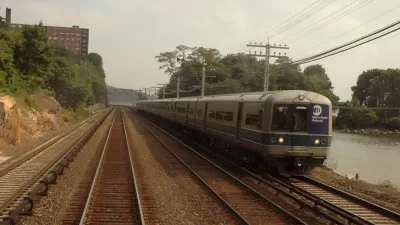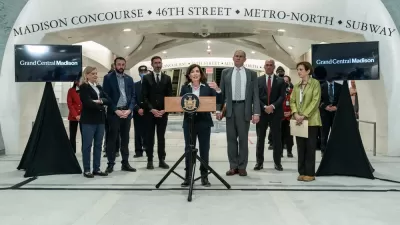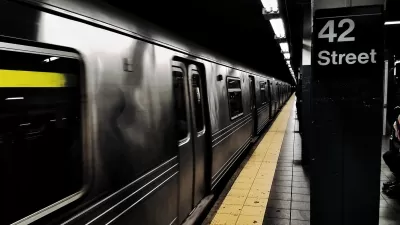Rather than bonds, an op-ed makes the case for electronic tolls to pay for improvements to commuter rail lines between New York City and Connecticut.

"Long commutes into New York City and within Connecticut mean our state is a less attractive place for people to live," writes Connecticut resident Michael Critelli. "People who travel into New York often drive and park at a train station and then get on subways or buses or walk to a workplace. As a result, their commute can now be close to two hours in each direction, four hours daily."
As maintenance and safety concerns pile up along MTA's Metro-North Railroad, Connecticut communities once within commuting distance of New York are becoming less attractive options. "Speed restrictions are in place in many locations where infrastructure is old and unreliable, where there are sharp curves and where there are bottlenecks caused by limited track capacity," Critelli writes.
Bond measures to fund rail upgrades, he goes on, aren't sustainable over the long term. "With tolling we can collect user fees from the out-of-state drivers who currently get a free ride on our highways — 40 percent of tolling revenues are expected to be collected from out-of-state drivers. Tolls can also help us reduce congestion and lower vehicle emissions."
FULL STORY: The hidden cost of slower, less reliable commuter rail service: Op-Ed

Study: Maui’s Plan to Convert Vacation Rentals to Long-Term Housing Could Cause Nearly $1 Billion Economic Loss
The plan would reduce visitor accommodation by 25,% resulting in 1,900 jobs lost.

North Texas Transit Leaders Tout Benefits of TOD for Growing Region
At a summit focused on transit-oriented development, policymakers discussed how North Texas’ expanded light rail system can serve as a tool for economic growth.

Using Old Oil and Gas Wells for Green Energy Storage
Penn State researchers have found that repurposing abandoned oil and gas wells for geothermal-assisted compressed-air energy storage can boost efficiency, reduce environmental risks, and support clean energy and job transitions.

Private Donations Propel Early Restoration of Palisades Playground
Los Angeles has secured over $1.3 million in private funding to restore the Pacific Palisades playground months ahead of schedule, creating a modern, accessible space that supports community healing after recent wildfires.

From Blight to Benefit: Early Results From California’s Equitable Cleanup Program
The Equitable Community Revitalization Grant (ECRG) program is reshaping brownfield redevelopment by prioritizing projects in low-income and environmental justice communities, emphasizing equity, transparency, and community benefits.

Planting Relief: Tackling Las Vegas Heat One Tree at a Time
Nevada Plants, a Las Vegas-based nonprofit, is combating the city’s extreme urban heat by giving away trees to residents in underserved neighborhoods, promoting shade, sustainability, and community health.
Urban Design for Planners 1: Software Tools
This six-course series explores essential urban design concepts using open source software and equips planners with the tools they need to participate fully in the urban design process.
Planning for Universal Design
Learn the tools for implementing Universal Design in planning regulations.
Ascent Environmental
Borough of Carlisle
Institute for Housing and Urban Development Studies (IHS)
City of Grandview
Harvard GSD Executive Education
Toledo-Lucas County Plan Commissions
Salt Lake City
NYU Wagner Graduate School of Public Service





























